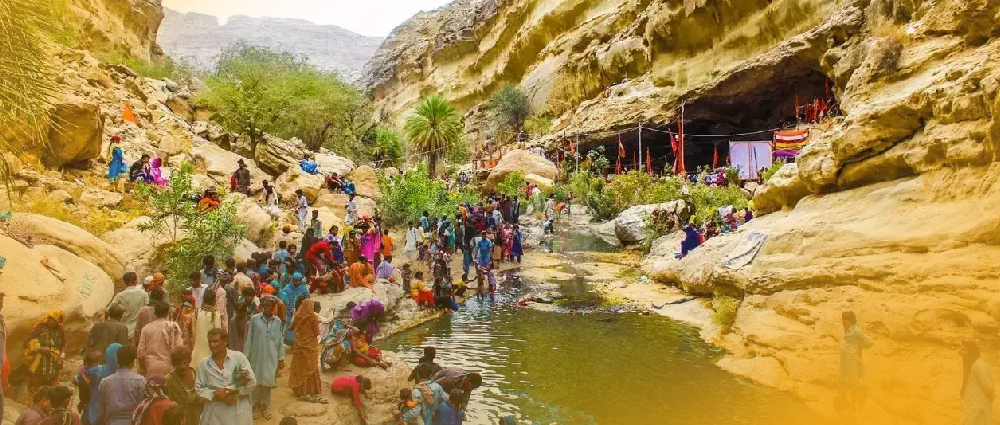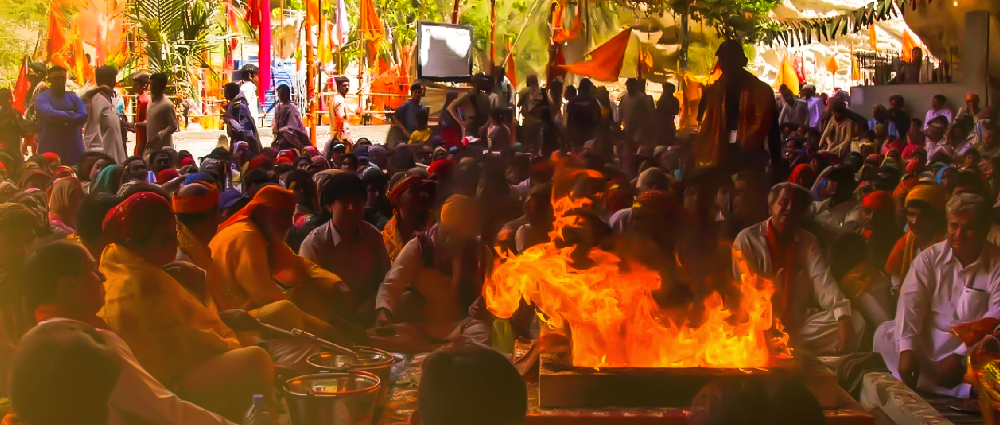Hinglaj Mata Mandir tucked between the mountainous regions of Balochistan, Pakistan, is the most revered site for the Hindus worldwide. As one of the 51 Shakti Peeths, Hinglaj is believed to be the resting place of the goddess Sati’s head.
For centuries, Hindus have embarked on this arduous journeys to seek blessings at the ancient temple. However, as political boundaries hardened, the pilgrimage to Hinglaj became full of challenges. Despite these difficulties, Hinglaj Mandir has transcended geographical and political divides to remain a vibrant center of devotion for Hindus globally.
The Role of Technology in Maintaining Connections to Hinglaj
In today’s age, technology has become a powerful tool in preserving religious and cultural connections. For Hindus who cannot physically visit Hinglaj Mandir due to political tensions, travel restrictions, or geographical distance, the internet has emerged as a means of keeping the pilgrimage alive.
Websites have been launched dedicated to Hinglaj that provide virtual tours, allowing devotees to explore the temple’s sacred grounds from the comfort of their homes. Social media platforms host communities where worshippers share stories, photos, and spiritual experiences, building a sense of connection and belonging.

Virtual Hinglaj Mata Mandir Ceremonies for the Global Hindu Community
For Hindus outside of Pakistan, who may feel disconnected from their cultural roots, these virtual events provide a sense of belonging and continuity. Temples in India and other parts of the world have embraced these digital innovations, broadcasting Hinglaj-related ceremonies to a global audience. This fusion of ancient traditions with modern technology has deepened the connection that Hindus feel toward Hinglaj, offering them solace and spiritual fulfillment in a time when physical travel to the temple may be challenging.
Stories of Hindus Returning to Hinglaj for Pilgrimage
While many Hindus rely on technology to maintain their connection to Hinglaj, there are also heartwarming stories of members of the Hindu outside of the country making the long journey back to Balochistan to visit the sacred temple. For these devotees, the pilgrimage to Hinglaj is not just a religious obligation but a deeply emotional and spiritual experience, reconnecting them to their roots.
In recent years, despite the political challenges, several Hindus from India, the United States, Canada, and other countries have successfully undertaken the pilgrimage to Hinglaj. These stories of return highlight the unbreakable bond that Hindus feel toward the temple, transcending national borders and personal challenges. The pilgrimage, for many, is a way of paying homage to their ancestors, reaffirming their faith, and feeling the powerful presence of the goddess Hinglaj Mata
These journeys often require overcoming significant hardships, which include securing visas and navigating difficult terrains. Yet, for those who make it, the pilgrimage represents a profound spiritual renewal, bringing them closer to their cultural heritage and community.
Hinglaj as a Symbol of Unity Among Hindus
Hinglaj Mandir has become a powerful symbol of unity among Hindus worldwide. Despite the temple’s location in Pakistan, a predominantly Muslim country, Hindus from across the world, whether in India, Pakistan, or the US, they share a deep reverence for Nani Hinglaj. The temple serves as a reminder that Hinduism, as a faith, goes beyond political boundaries and unites people through shared traditions, beliefs, and spiritual practices.
In Pakistan, the local Hindu and muslim communities have worked tirelessly to preserve the sanctity of the temple, ensuring that it remains accessible to pilgrims. At the same time, Hindus in India, Europe, and North America have supported these efforts, promoting a sense of solidarity across borders. Hinglaj has become a space where Hindus, regardless of their nationality, come together in devotion to the goddess, reaffirming their shared cultural identity.
The annual Hinglaj Yatra, where thousands of pilgrims walk through the rugged hills of Balochistan to reach the temple, is a testament to this unity. Pilgrims from all over the world join in this journey, embodying the spirit of togetherness that Hinglaj represents. In this way, the temple has become a symbol of resilience and connection, reminding Hindus everywhere that their faith and culture cannot be confined by political or geographical boundaries.

Conclusion
Hinglaj Mandir holds a special place in the hearts of Hindus worldwide. Whether through virtual pilgrimages, online ceremonies, or physical journeys, Hinglaj Mata temple transcends borders, representing unity, faith, and spiritual connection for Hindus around the globe. In an era of division, Hinglaj Mata Mandir remains a beacon of shared heritage and divine grace for all who seek its blessings.

